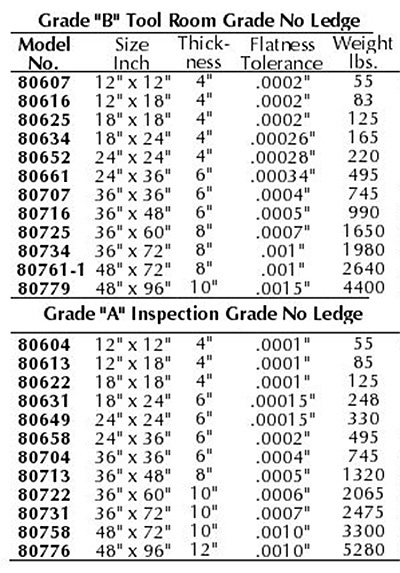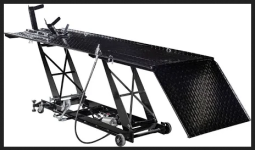The image doesn't show up, at least for me, on the website, so I attached a screen-shot. Is this the one you are referring to?Mine is probably the best 'tool' I've ever purchased.
You are using an out of date browser. It may not display this or other websites correctly.
You should upgrade or use an alternative browser.
You should upgrade or use an alternative browser.
Advice/Help on Engine Rebuild of an '03 GSX750F Katana
- Thread starter WestBrantKid
- Start date
Thanks.Moved to Technical forum.
@WestBrantKid if i could suggest editing the title to include the model/engine? May help someone in the future.
For a 2-4k budget, he can probably buy a running katana. You could know ahead of time if the engine is healthy. I think it's going to be hard for this project to make financial sense but if he learns and has fun, it's a hobby, hobbies lose money. This is just a different way to lose money on bikes.Ultimately, @WestBrantKid, you may find after disassembling that it will just be cheaper to find a motor at the junkers. I suppose it will depend on what shape yours ends up being.
So, a piece of polished marble should work? It doesn't flex, and is machine ground and polished. And very strong.Lap=make flat. Probably cheaper to pay a shop to do it than to figure it out for yourself on a one-off. You need a flat surface and something abrasive to transfer the flatness to your parts. Only takes a few minutes if you have the flat surface but we are talking engineered flat here not just a poured concrete floor. If the flat surface isn't flat, you just make a mess. In a pinch you could probably use a sheet of glass but it's normally got a curve to it so I don't love that idea.
Do I understand this right? I would use an abrasive, like an adhesive sandpaper, with the flat surface to sand the machined surface perfectly flat?
That's the right idea. Polished marble is not necessarily flat in an engineering sense. A proper stone surface plate comes with a certificate of conformity that provides the actual flatness measurement. Even a grade B surface plate is flat within two ten-thousandths over the surface. I have no idea what a random piece of counter is and I have never measured one. I was offered a great deal on a nice grade A surface plate but unless I was doing this really often or charging people, it's just too expensive and takes up too much space for me to own. A 500 lb rock that needs to be treated like an egg or you ruin it just isn't something that brings me joy.So, a piece of polished marble should work? It doesn't flex, and is machine ground and polished. And very strong.
Do I understand this right? I would use an abrasive, like an adhesive sandpaper, with the flat surface to sand the machined surface perfectly flat?

I called around about getting the engine rebuilt professionally. Two places quoted me $10,000. My jaw hit the floor.For a 2-4k budget, he can probably buy a running katana. You could know ahead of time if the engine is healthy. I think it's going to be hard for this project to make financial sense but if he learns and has fun, it's a hobby, hobbies lose money. This is just a different way to lose money on bikes.
I already spent a couple thousand on luggage for the bike. Luggage isn't an option, even through aftermarket for this bike. I bought full Givi Outback, and mounting brackets for the cheapest bike I could find, then cut the arms off all the brackets, bought the required tubing which was not easy for me to source, and fabricated my own. So, I love the feel of this bike, I'm very satisfied with the power, and I now have luggage. If I sold the bike, I likely couldn't get more than $2000, but to me, it's much more valuable. I want it to live as long as I do. What's another couple thousand? lol
Priller
Well-known member
That's the one I got, only because it was on sale. There's a cheaper blue one that appears to be largely identical, and as long as you don't have a massive dresser, is fine. The front wheel chock on both is garbage, but you can get a much higher quality one from PA for not a lot more that works way better. The lift is on wheels, but they're small and hard, and I don't think you could move it with a bike on board.The image doesn't show up, at least for me, on the website, so I attached a screen-shot. Is this the one you are referring to?
The parts bin I got was from CT:
General PDP Template
I could easily pop a bin off and put it next to me, and I just put a strip of masking tape on to mark what was in it it with sharpie. It ended up making things a lot easier, especially when I was working on a few different things at once.
As for 'worth it', it all depends on your goals. It's probably way cheaper to buy another motor as @TK4 says, and realistically, the best value move would be to keep an eye out for a clean example as a replacement. But I will say there's a lot of satisfaction that comes from taking something that's not working properly and making it right. It might be a good idea to have a spare motor handy that you can plug back in if it ends up being more difficult or less fun than expected so you're not stuck with a bike you really don't want to reassemble.
It's also worth investigating how much actually needs to be done and maybe starting with less than a full rebuild. In my case, what started as some minor updates quickly snowballed into way, way more than I had planned. It ended up costing me significantly more than planned, and took way longer. But I also really enjoyed it and kind of miss having that project to tinker on through the winter. I'll be doing a full service on my Guzzi this winter as a much lower grade project to keep me busy.
I was considering leaving the bike off the road for next summer anyway because I plan to do this rebuild, and since the engine is out, and I've had most of the bike taken apart several times already before, I might just do a full restoration. The fairing will be off, the engine out... I might just strip it completely and restore the whole thing to new condition. Paint the frame, new bolts, barring and bushings everywhere... I'd have a brand new 2003 GSX750F Katana, and maybe with a few improvements.That's the one I got, only because it was on sale. There's a cheaper blue one that appears to be largely identical, and as long as you don't have a massive dresser, is fine. The front wheel chock on both is garbage, but you can get a much higher quality one from PA for not a lot more that works way better. The lift is on wheels, but they're small and hard, and I don't think you could move it with a bike on board.
The parts bin I got was from CT:
General PDP Template
I could easily pop a bin off and put it next to me, and I just put a strip of masking tape on to mark what was in it it with sharpie. It ended up making things a lot easier, especially when I was working on a few different things at once.
As for 'worth it', it all depends on your goals. It's probably way cheaper to buy another motor as @TK4 says, and realistically, the best value move would be to keep an eye out for a clean example as a replacement. But I will say there's a lot of satisfaction that comes from taking something that's not working properly and making it right. It might be a good idea to have a spare motor handy that you can plug back in if it ends up being more difficult or less fun than expected so you're not stuck with a bike you really don't want to reassemble.
It's also worth investigating how much actually needs to be done and maybe starting with less than a full rebuild. In my case, what started as some minor updates quickly snowballed into way, way more than I had planned. It ended up costing me significantly more than planned, and took way longer. But I also really enjoyed it and kind of miss having that project to tinker on through the winter. I'll be doing a full service on my Guzzi this winter as a much lower grade project to keep me busy.
I put that organizer on my wishlist.
In "an engineering sense" if you rub the head on any three stones, you will eventually get a perfectly flat surface, PERFECTLY flat, like microscopic flatPolished marble is not necessarily flat in an engineering sense.
Lapping a head is sorta like ring hone. It is just as much surface prep as getting PERFECTLY flat. Old fibre head gaskets don't need surface prep, the new steel head gaskets DO (these bikes have head gasket sealing issues, the head bolts SUCK. They're necked down and only take 20# torque. That's not a lot for such a big head).
Polished marble is good enough. A piece of glass on top of something solid is good enough.
Inspection surfaces are rare and expensive.
Probably mine too.Mine is probably the best 'tool' I've ever purchased.
All good advice. Jump in and split those cases! I was scared the first time I took an inline four with integrated tranny apart but with the manual in hand it all went well. That was was a 76 CB750. A 4 valve per cylinder 84 GPZ900R (ninja) had more parts but again with a manual was not too complicated.
I've used self adheesive sandpaper on 1/2" glass for cleaning head/jug surfaces.
Not sure if good lighting and tunes has been mentioned...
Mad Mike
Well-known member
I think one of the most important skills hone are diagnostics. I’ll bet the rattle is more worthy of a repair than a rebuild, 60k is less than half a life for that motor. Learning how to diagnose problems will save a lot of unnecessary expense and time in a rebuild.
If you want to learn how to rebuild a motorcycle engine, find a clapped out dirt bike or dual sport that really needs a rebuild. It will be the same work, just simpler because there is only one of everything. Get that right and when the Suzy gets to 150k and is tired, you could be ready to tackle that engine.
If you want to learn how to rebuild a motorcycle engine, find a clapped out dirt bike or dual sport that really needs a rebuild. It will be the same work, just simpler because there is only one of everything. Get that right and when the Suzy gets to 150k and is tired, you could be ready to tackle that engine.















